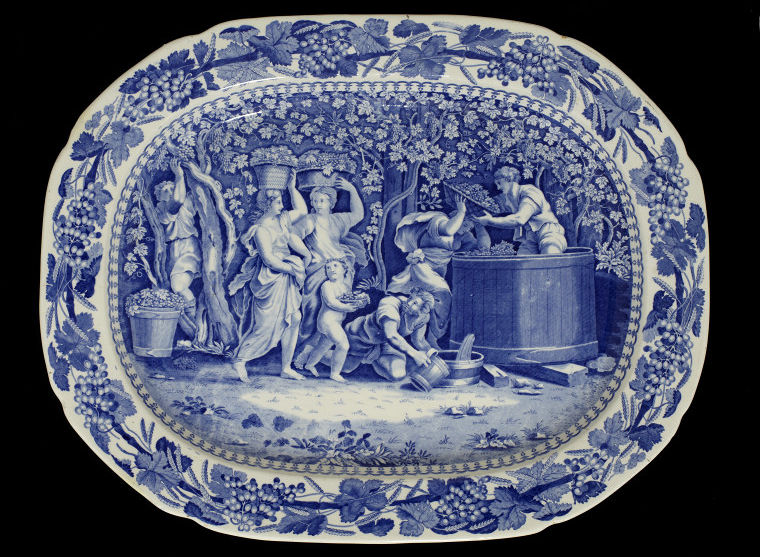In a recent post for the display Blue and White: British Printed Ceramics Florence Tyler posed the question ‘Can a display exist without objects?’. Well there are certainly ceramics in the display, you will be pleased to know, but there are some things missing: the original artworks that inspired the ceramic decoration.


The V&A Ceramic Galleries were built in 1909 to house the worlds most comprehensive ceramic collection. The galleries were purposely designed by the architect Sir Aston Webb (1849-1930) to allow for the most natural daylight, being situated at the top of the Museum (6th floor) with roof and side windows throughout. The natural daylight allows the tones of the various ceramic bodies and glazes to be clearly distinguished from each other.


The bright light is perfectly fine for the hardy ceramics but not so good for organic material, such as paper, that can fade in these conditions. It meant that we could not show these types of objects in the display, which was a shame since so many of the ceramic patterns featured in the show relate to prints or photographs. Part of the joy of printed ceramics is seeing how the manufacturers and artists have transferred or interpreted existing artworks into their designs.
Thankfully these light sensitive materials can now be represented in virtual form. With the help of the V&A Visitor Technology team we were able to create a digital slideshow on a screen in the display. Hours of scouring the fabulous online databases, such as Printed British Pottery & Porcelain, researching in the V&A, the British Museum study rooms and private collections have allowed us to find the original sources for the decoration on many of the ceramics.
These design sources can now be seen alongside the blue-and-white ceramics they inspired.
I hope this preview tempts you along to the see the display which runs until the 3 January 2016 in Ceramics Gallery 146, 6th Floor, V&A South Kensington.